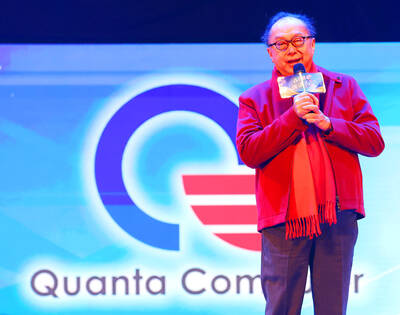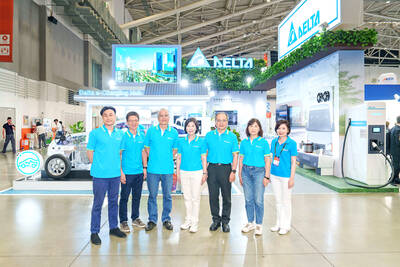Eight months ago, Ssangyong Motor’s car plant looked like a war zone as unionists occupying the premises battled riot police with catapults, firebombs and steel pipes.
Today the mood is altogether more cooperative, and both sides are seeing the benefit.
The 77-day occupation, in protest at mass redundancies designed to save the loss-making carmaker, ended only with a police raid featuring commandos rappelling from a helicopter in a hail of missiles.
More than 100 people were hurt, dozens were arrested, the redundancies went ahead and the firm’s financial troubles deepened with the lost production.
“There was no winner: Neither management nor labor could get what they wanted,” said Ssangyong Motor union leader Kim Kyu-han, a moderate elected in the wake of the strike.
Workers at the country’s smallest automaker also cut ties with the militant Korean Confederation of Trade Unions (KCTU) — part of a trend in South Korea’s labor movement, which was once known for its militancy.
Some members of the KCTU and its less hardline rival the Federation of Korean Trade Unions (FKTU) announced last month they had quit the umbrella groups to launch a “third way” union alliance.
Labor Solidarity for New Hope has recruited 52 unions with 120,000 workers in less than a month. The FKTU and the KCTU have 800,000 and 650,000 members respectively, government data shows.
The unions of Hyundai Heavy Industries, the world’s largest shipbuilder, subway operator Seoul Metro and KT, the top communications firm, are leading the new alliance.
They see the established umbrella groups as too violent, too politically biased or too bureaucratic.
“The era of unions resolving problems by force has gone,” Seoul Metro union leader Chung Yeon-soo, a KCTU founder and now co-chairman of the new grouping, said. “The paradigm of the labor movement — based on the 19th century industrial structure — no longer fits the business environment in the 21st century.”
Radicalism has its roots in the 1970s and 80s, when unions led the pro-democracy movement against military-backed dictatorship.
Attitudes began to change during the 1997-1998 financial crisis, which triggered tens of thousands of redundancies in a country which once prized lifetime employment guaranteed by strict labor laws.
Kim Jeong-han, of the Korea Labor Institute, a research body, attributed militancy partly to a poor social welfare network and a still-inflexible job market.
But Kim said more and more unionists realize working conditions cannot improve just through a strike. At the Ssangyong plant in Pyeongtaek, 70km south of Seoul, union chief Kim said the mood has changed.
“Many KCTU unionists called me a traitor and some still do, but I don’t care,” the 41-year-old said.
A framed photo of him and other union leaders staging a sit-in at the plant in 2006 hangs on his office wall. “I put it up on the wall a month ago so as not to repeat the same mistake,” Kim said.
Underneath is a blanket, pillow and sleeping mat in case he has to work late and sleep in his office.
“I used to sleep out for a strike. I sleep here these days to spend more time cooperating with management to pull the company out of this crisis,” he said.
Kim said executives often pay him unscheduled late-night visits to discuss business problems — unimaginable in the past — and even bring pizza.
Productivity has risen sharply. The average manufacturing time for each vehicle fell from 87.9 hours before the strike to 48.7 hours afterward, said company spokesman Choi Jin-woung.
“Workers are all desperate to help save the company from the crisis,” said Oh Tae-soo, 42, as he worked on the assembly line turning out Kyron sports utility vehicles.
Ssangyong Motor ended up laying off more than one-third of its total 5,000 staff. After the bitter dispute ended, labor and management at Ssangyong announced a policy of no industrial disputes. In March they rallied together from the factory to Seoul to seek financial aid.
“If our salaries could rise with a general strike, we would walk out. If we could improve working conditions by jabbing our arms in the air at a union rally, we would do so,” said union leader Kim. “But it’s not true.”

Quanta Computer Inc (廣達) chairman Barry Lam (林百里) is expected to share his views about the artificial intelligence (AI) industry’s prospects during his speech at the company’s 37th anniversary ceremony, as AI servers have become a new growth engine for the equipment manufacturing service provider. Lam’s speech is much anticipated, as Quanta has risen as one of the world’s major AI server suppliers. The company reported a 30 percent year-on-year growth in consolidated revenue to NT$1.41 trillion (US$43.35 billion) last year, thanks to fast-growing demand for servers, especially those with AI capabilities. The company told investors in November last year that

Intel Corp has named Tasha Chuang (莊蓓瑜) to lead Intel Taiwan in a bid to reinforce relations between the company and its Taiwanese partners. The appointment of Chuang as general manager for Intel Taiwan takes effect on Thursday, the firm said in a statement yesterday. Chuang is to lead her team in Taiwan to pursue product development and sales growth in an effort to reinforce the company’s ties with its partners and clients, Intel said. Chuang was previously in charge of managing Intel’s ties with leading Taiwanese PC brand Asustek Computer Inc (華碩), which included helping Asustek strengthen its global businesses, the company

Taiwanese suppliers to Taiwan Semiconductor Manufacturing Co. (TSMC, 台積電) are expected to follow the contract chipmaker’s step to invest in the US, but their relocation may be seven to eight years away, Minister of Economic Affairs J.W. Kuo (郭智輝) said yesterday. When asked by opposition Chinese Nationalist Party (KMT) Legislator Niu Hsu-ting (牛煦庭) in the legislature about growing concerns that TSMC’s huge investments in the US will prompt its suppliers to follow suit, Kuo said based on the chipmaker’s current limited production volume, it is unlikely to lead its supply chain to go there for now. “Unless TSMC completes its planned six

Power supply and electronic components maker Delta Electronics Inc (台達電) yesterday said it plans to ship its new 1 megawatt charging systems for electric trucks and buses in the first half of next year at the earliest. The new charging piles, which deliver up to 1 megawatt of charging power, are designed for heavy-duty electric vehicles, and support a maximum current of 1,500 amperes and output of 1,250 volts, Delta said in a news release. “If everything goes smoothly, we could begin shipping those new charging systems as early as in the first half of next year,” a company official said. The new